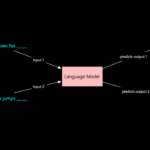Introduction
In the world of operating systems, Windows, Linux, and macOS dominate the mainstream. But hidden within the history of computing lies TempleOS, a unique, public domain, 64-bit operating system built almost entirely by a single man — Terry A. Davis (1969–2018).
TempleOS is not just another alternative OS. It is both a technological curiosity and an artistic vision, representing a lifetime of coding dedication, religious symbolism, and creative expression. Whether you approach it as a programmer, historian, or digital explorer, TempleOS has become an enduring piece of computing culture.
The Life of Terry A. Davis (1969–2018) and the Creation of TempleOS
Early Life and Education
Terry A. Davis was born in 1969 in West Allis, Wisconsin, USA, and raised in the suburbs of Milwaukee. From a young age, he showed a remarkable aptitude for computers and engineering. This interest led him to pursue electrical engineering at Arizona State University, where he earned his degree.
His early brilliance caught attention quickly — Davis had a sharp, creative mind that excelled in both hardware and software. He landed a position as a programmer at Ticketmaster, where he worked on systems that processed massive amounts of transactions.
Career and the Onset of Mental Illness
By the late 1990s, Davis began to experience severe mental health challenges, later diagnosed as schizophrenia. This condition affected his perception of reality and relationships, and he left professional programming.
During this period, Davis withdrew into isolation but remained deeply devoted to programming. Despite his struggles, he believed he was receiving divine instructions and set out to create something extraordinary: a new operating system.
The Birth of TempleOS
Over the span of more than a decade, Davis single-handedly wrote TempleOS, a 64-bit, public domain operating system. He created every part of it himself:
Kernel
Compiler
Graphics engine
Applications
Programming language (HolyC)
TempleOS was designed to run at a fixed resolution of 640×480 with 16 colors, with Davis insisting this was a command from God to keep the system simple, transparent, and free from the clutter of modern operating systems.
He envisioned TempleOS as a “Third Temple”, a spiritual project where people could talk to God through the computer. Its built-in “Oracle” application, which generated Bible-like verses, reflected this vision.
Public Persona and Online Presence
In the 2000s and 2010s, Davis began sharing TempleOS and his ideas online. He uploaded videos to YouTube and engaged in forums and IRC chats.
His brilliance fascinated programmers, who were amazed that one man built an entire 64-bit OS from scratch.
At the same time, his struggles with schizophrenia often surfaced in erratic, offensive, or confusing statements. This created a controversial but deeply human image: a man torn between genius and illness.
Legacy of TempleOS
TempleOS is not a practical operating system for everyday use, but it has become:
A technical marvel admired for its design simplicity and purity.
A cultural artifact that blends software engineering with Davis’s spiritual worldview.
A reminder of what is possible when one individual devotes themselves entirely to a vision.
Forks like ZealOS continue to keep the project alive, while online communities study, archive, and preserve his work.
Read: Transformer was first introduced in the seminal paper “Attention is All You Need”
What is TempleOS?
TempleOS is a 64-bit, non-networked operating system, written from scratch by Terry A. Davis over the course of a decade. It is known for:
A custom programming language called HolyC (an evolution of C).
An integrated compiler and shell (no separation between system, IDE, and apps).
A fixed resolution of 640×480, 16 colors, chosen deliberately for simplicity.
A built-in command line and GUI hybrid environment.
Quirky but functional applications and games (including biblical-inspired tools like the “Oracle”).
TempleOS was inspired by Davis’s belief that he was building a “modern-day Third Temple,” hence its name. Despite its eccentric nature, it’s a fully functional operating system that can run directly on hardware or inside a virtual machine.
Read: The AI Battle Between Mark Zuckerberg and Sam Altman
Features and Design Philosophy
Simplicity by Design
TempleOS avoids modern complexities. Davis argued that limiting the system to 16 colors, fixed resolution, and a single-user mode was essential to keeping the OS understandable, auditable, and free from “bloat.”HolyC Programming Language
At the heart of TempleOS lies HolyC, a variation of C that interacts seamlessly with the kernel, shell, and graphics system. This makes TempleOS an ideal playground for programmers who want to tinker with low-level computing concepts.Integrated Development
The OS merges text editing, compiling, and running code in one place. Every user essentially works as a developer, making TempleOS more of a creative coding environment than a traditional consumer OS.Religious & Creative Elements
TempleOS includes the “Oracle,” which generates Bible-inspired verses when prompted, games written by Davis, and references to spirituality throughout the system.
Read: What Is a Prompt Injection Attack?
Downloads & Resources
TempleOS is public domain software — free for anyone to use, share, or modify.
Official Archive: Archive.org
Alternative Sources: Odysee (invite), latest torrent, magnet links
Video Streams: Odysee (NSFW)
Community and Forks
Even after Davis’s passing in 2018, TempleOS remains alive through its community and forks:
Communities:
Reddit (TempleOS)
TempleOS Discord & TempleOS Users Discord
Revolt & #templeos on Rizon (IRC)
Steam discussions
Davisanism “Church of TempleOS” (fan group)
Forks:
ZealOS – A modernized fork maintaining TempleOS’s core spirit while adding QoL features.
Terry A. Davis: The Man Behind the Code
Terry A. Davis was a brilliant yet troubled programmer who single-handedly built TempleOS. A former Ticketmaster engineer, he spent more than a decade coding the OS from scratch — compiler, kernel, graphics, and applications.
Davis also struggled with mental illness, which shaped much of his work and online persona. Despite controversy in his later years, his technical contributions stand as proof of his genius and dedication.
Following his death in 2018, his family requested that supporters honor his memory by donating to mental health organizations such as:
Why TempleOS Matters
While TempleOS is not practical for daily use, it holds a special place in computing history:
A reminder of what one person can achieve with passion and persistence.
A unique experiment in operating system design and philosophy.
A cultural artifact, blending spirituality, art, and technology.
TempleOS continues to fascinate developers, historians, and digital archivists. Its legacy isn’t just about code — it’s about creativity, individuality, and the human struggle behind technology.
Read: Agentic Architecture and AI Agents in Enterprise
Conclusion
TempleOS is more than an operating system. It’s a digital shrine, a work of art, and a testament to the vision of Terry A. Davis. Downloading and exploring it today isn’t just about running quirky software — it’s about experiencing a piece of computing history.
Whether you tinker with HolyC, browse its eccentric built-in apps, or simply admire the audacity of building an OS from scratch, TempleOS stands as one of the most remarkable personal programming achievements of our time.
Rest in peace, Terry A. Davis (1969–2018).




















